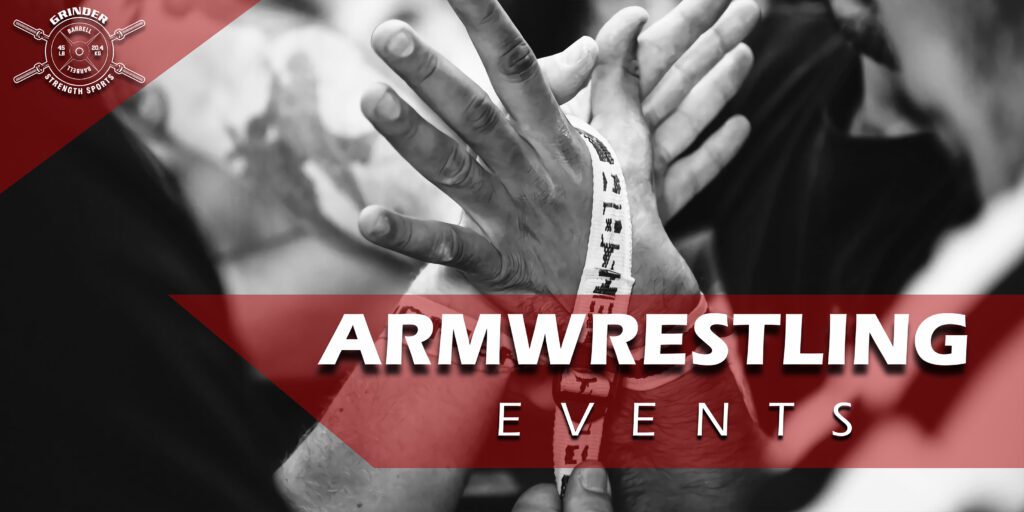Effectively structuring your table time is crucial for maximizing the benefits of your armwrestling practice sessions. A well-organized session should include a comprehensive warm-up, targeted technical drills, controlled sparring, and a thorough cool-down. This guide provides detailed insights into each component, helping you structure your table time for optimal performance and progress.
Components of a Well-Structured Table Time Session
1. Warm-Ups
Purpose:
- Prepare the muscles and joints for the demands of armwrestling.
- Increase blood flow and enhance flexibility.
- Reduce the risk of injury.
Warm-Up Routine:
- General Warm-Up (5-10 minutes):
- Light cardio exercises (jogging, cycling) to increase heart rate.
- Dynamic stretches focusing on the arms, shoulders, and wrists (arm circles, wrist rotations).
- Specific Warm-Up (5-10 minutes):
- Wrist curls and extensions with light resistance bands.
- Hand and finger warm-up exercises (squeezing a stress ball or using a grip trainer).
- Light table practice, mimicking armwrestling movements with minimal resistance.
2. Technical Drills
Purpose:
- Focus on improving specific techniques and movements.
- Develop muscle memory and refine form.
- Enhance the efficiency and effectiveness of armwrestling maneuvers.
Technical Drill Routine:
- Hook Technique Drills:
- Practice engaging the opponent’s hand and wrist, pulling towards your body.
- Perform 3 sets of 10 reps focusing on form and control.
- Toproll Technique Drills:
- Work on attacking the opponent’s fingers and wrist, aiming to straighten their arm.
- Perform 3 sets of 10 reps, emphasizing wrist extension and pulling motion.
- Press Technique Drills:
- Develop the pressing motion using body weight and shoulder strength.
- Perform 3 sets of 10 reps, ensuring proper shoulder involvement and tricep engagement.
- Static Holds:
- Hold specific positions (hook, toproll) to build strength and endurance in those angles.
- Perform 3 sets of 15-20 seconds holds at various angles.
3. Sparring
Purpose:
- Apply techniques in a competitive, real-world scenario.
- Test and refine strategies under pressure.
- Build endurance and mental toughness.
Sparring Routine:
- Controlled Sparring:
- Engage in light to moderate intensity sparring with a focus on technique rather than power.
- Duration: 10-15 minutes.
- Intense Sparring:
- Increase intensity to mimic competition conditions, focusing on executing techniques under pressure.
- Duration: 10-15 minutes.
- Ready-Go Drills:
- Practice starting techniques and explosive movements to gain an initial advantage.
- Perform 5-10 reps with brief rest periods.
4. Cool-Downs
Purpose:
- Facilitate recovery and reduce muscle soreness.
- Improve flexibility and prevent stiffness.
- Gradually lower heart rate and relax muscles.
Cool-Down Routine:
- General Cool-Down (5-10 minutes):
- Light cardio exercises (walking, slow cycling) to gradually reduce heart rate.
- Static Stretching (5-10 minutes):
- Stretch major muscle groups used in armwrestling (biceps, triceps, shoulders, forearms).
- Hold each stretch for 20-30 seconds.
- Foam Rolling (Optional, 5-10 minutes):
- Use a foam roller to release muscle tension and improve blood flow.
Example Structured Table Time Session
Total Duration: 60-75 minutes
1. Warm-Up (10-15 minutes):
- 5 minutes of light jogging.
- 5 minutes of dynamic stretches (arm circles, wrist rotations).
- 5 minutes of specific warm-up (light wrist curls, hand exercises).
2. Technical Drills (20-25 minutes):
- Hook Technique: 3 sets of 10 reps.
- Toproll Technique: 3 sets of 10 reps.
- Press Technique: 3 sets of 10 reps.
- Static Holds: 3 sets of 20 seconds each at various angles.
3. Sparring (20-25 minutes):
- Controlled Sparring: 10 minutes.
- Intense Sparring: 10 minutes.
- Ready-Go Drills: 5-10 reps.
4. Cool-Down (10-15 minutes):
- 5 minutes of light walking.
- 5 minutes of static stretching (biceps, triceps, shoulders, forearms).
- 5 minutes of foam rolling (optional).
Conclusion
Structuring your table time effectively is essential for maximizing your armwrestling training benefits. Incorporate a comprehensive warm-up to prepare your body, focus on technical drills to refine your skills, engage in controlled and intense sparring to apply techniques under pressure, and finish with a thorough cool-down to aid recovery. By following this structured approach, you can ensure that each session is productive, safe, and geared towards continuous improvement in your armwrestling performance.



